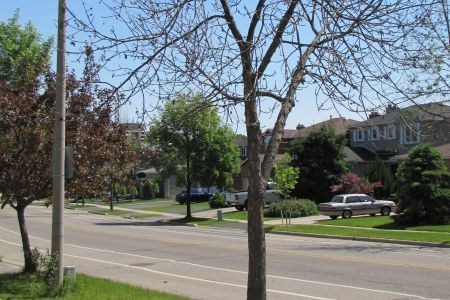Millions of ash trees will die in Ontario over the next 10 years, but a pesticide developed out of Sault Ste. Marie is poised to put a dent in those numbers, and interest in the product has been piqued around the globe.
Developed in 2001 by BioForest Technologies Inc., TreeAzin is an organic pesticide manufactured from the Indian neem tree designed to combat the onset of emerald ash borer (EAB), the emerald green beetle that destroys ash trees by burrowing into the bark, eating the tree from the inside out and eventually killing it.
Costs associated with the encroachment of EAB are estimated at between $2 and $3 billion in Canada, but the devastation goes beyond financial constraints. Trees provide shade, reduce runoff, pull pollutants out of the air and increase property values, said Joe Meating, president of Bioforest Technologies.
“It affects every community and many, many homeowners, and it's like that tornado that's coming at you: you can't avoid it,” he said of the onset. “The costs are unavoidable, the impacts are unavoidable and it's not going to be nice in a lot of communities.”
Cities across the country have embarked on massive tree-cutting campaigns in an effort to combat the little green pest, but TreeAzin offers an alternative to cutting the trees down, Meating said.
Injected through holes bored into the tree trunk, TreeAzin travels underneath the tree's bark with water and other nutrients, disseminating the pesticide through the tree. The pesticide kills the larvae, while simultaneously sterilizing any females that land on the tree to lay their eggs, suppressing the population.
An affected tree is typically treated once in the spring, every two years, for eight to 10 years. The cost of treatment varies depending on the condition and size of the tree, but Meating said $200 to $300, or an average of $100 to $150 per year, is a fair starting estimate—a reasonably priced solution that allows homeowners to save their tree.
“Ultimately, cutting your tree down is going to be a lot more expensive and you've lost your tree, and that has ecological effects, environmental effects and property value impacts,” he said. “You can start off with a little tree again, but you wait 30 years before you have even a moderately sized tree versus a nice, big ash tree.”
A former forest insect control officer with the Forest Insect and Disease Survey Unit of the Canadian Forest Service, Meating said he has received interest in TreeAzin from across North America. It is currently only approved for emergency registration in Canada, but Meating anticipates getting full registration this spring.
TreeAzin has full registration in the U.S., and BioForest is in the process of setting up a distribution agreement there. Interest has also trickled in from Australia—test trials had good results there—the Middle East, the Mediterranean, Europe and Scandinavia.
Calling EAB “the most damaging insect I have ever seen in my career” because it kills 99.9 per cent of the trees it attacks, Meating said that, as the planet warms up, the effects of pests like EAB may become even more evident. As trees become more stressed due to rising temperatures and conditions like draught, insects will take advantage of the trees' weakened state. Insect populations will build up, and species can become more of a nuisance.
“Some insects are becoming more of a problem because a lot of the insects have one generation a year, but as temperatures increase, we're now seeing some insects that have two generations a year, which allows them to increase their numbers dramatically,” Meating said.
As people place more value on their trees and shift their focus from cutting them down to saving them, Meating anticipates seeing a boost in business. Already this year, sales have taken off, and BioForest is working on the second-generation TreeAzin injector, which he anticipates will be cheaper, more efficient and should be ready for field testing this summer.
Meating concedes that, “there will always be another bug that comes along,” and there's no guarantee that TreeAzin can save every tree. But he is optimistic that his company's product can make a difference and wants people to know that cutting down trees isn't the sole option.
“EAB will kill most of the ash trees in North America before it's done,” he said. “But if we can save a few, that's good.”




